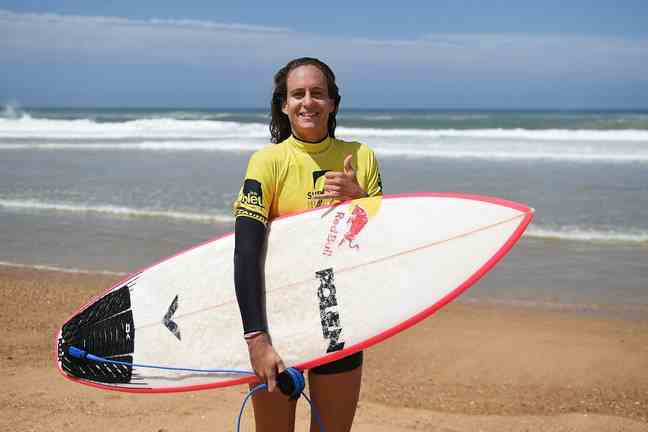Rookie mistake of our boss when welcoming surfer Justine Dupont last month in the studio of our premises, where the temperature is around 30 degrees: thinking he was doing the right thing, he hands her a plastic bottle of water fresh out of the dispenser. Sacrilege! Justine, a fan of gourds, wears them in horror. Plastic, surfers see enough of it at sea.
“Essentially on the European coast, you see the plastic waste that is on the beaches, explains the 30-year-old Bordelaise. Before, we saw large pieces of plastic bottles, now we see small ones, microplastics. No coincidence, then, that the best big wave surfer in the world has banned single-use plastic from her daily life, while excluding meat from her plate. “It’s a commitment that I have always had but that I try to refine as I move forward,” she continues.
Surfboards with non-recyclable materials
In particular because surfing is fundamentally not ecological. From the Landes where she is based to Nazaré (Portugal), now the best spot in the world, passing above all through the unavoidable Tahiti or Hawaii, there are one or more worlds that are difficult to connect other than by plane. Not super eco-friendly, then.
This is also the paradox of surfing. Her community wants to be extremely conscious and respectful of her element, which she sees suffering – “we see that the corals are changing color and dying” – but she must progress on certain material aspects. This is the case with surfboards, which are still made of non-recyclable materials. So, Justine Dupont compensates economically.

8,000 euros paid by calculating its carbon footprint
“Each year, I calculate this carbon footprint and that allows me to donate a check to an association, she confides. It’s a project that I have with the MAIF, which pays 50%, and I pay the other half. In 2021, it was 8,000 euros, and it will be at the same height this year. The French surfer has this time chosen to support Coco an Dlo, an association born from Coralie Balmy’s desire to raise awareness among younger generations about the environment, through learning to swim.
In addition to offsetting this carbon footprint, which she considers “high”, Justine Dupont tries to optimize her travels, avoiding round trips and favoring long stays on site, in Nazaré as in Tahiti, which have the advantage to become familiar with the local geography and nature. A compromise between ideal ecological and expensive professional life for the environment.

